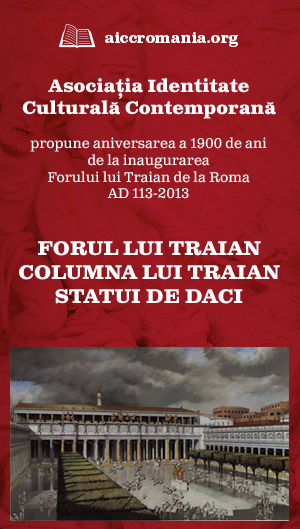Hermitage Museum (Государственный Эрмитаж) / 2, Dvortsovaya Ploshchad (Dvortsovaya Square), 190000, St Petersburg / hermitagemuseum.org
Bust of a Dacian (Pileatus), nr.inv. A 247
Place of discovery: it was discovered by the year 1855, in the foundations that reach the Forum of Trajan. Initially it was a part for a short period of Campana collection at Rome, then it was acquired in 1861 by the Tsarist Empire, by the will of Alexander II, and it is currently preserved in the Hermitage Museum in Petrograd (inv. no. A 247, former no. 51).
Material: marble.
Dimensions: the total height of the sculpture (without support) is 0.94 m (bust, head and pileus), the head alone (from the chin to the top of the pileus) measured 0.66 m
Conservation status: pretty good. The head is antique, the chest and the curtain are modern (restored in stucco.) The character represented is a bearded man of a certain age, dressed in traditional Dacian costume. The figure of the Dacian noble appears to be stately, dignified, with penetrating gaze. The head is covered with the usual pileus, worn only by the Dacian nobles. The nose, lips, parts of the ears, parts of the beard, left portion of forehead, the left eyebrow, a part of the figure (zygomatic region), are round. The bust is covered with a coat set on the right shoulder by a round fibula. The sculpture is of a very good artistic and iconographic quality.
Date: the beginning of the IInd century AD. The pupils incised in the marble, the way to represent the eyebrows by a series of lines and the hair strips (at the level of the beard) separated by sinuous grooves are characteristics that refer to art period between the end of the reign of Trajan and the beginning of Hadrian's period.
Typology:Dacian
Bust of a Dacian (Pileatus), nr.inv. A 248
Place of discovery: it was discovered by the year 1855, in the foundations that reach the Forum of Trajan. Initially it was a part for a short period of Campana collection at Rome, then it was acquired in 1861 by the Tsarist Empire, by the will of Alexander II, and it is currently preserved in the Hermitage Museum in Petrograd (inv. no. A 248).
Material: Carara marble.
Dimensions: h 0,99 m ; the antique part, head = 0,598 m height.
Conservation status: Only the head is antique, the chest (in gypsum) is modern. The nose, eyebrows, bust are in gypsum and have been added later. A modern part of the beard at jaw level is from marble.
Date: the beginning of the IInd century AD. The pupils incised in the marble, the way to represent the eyebrows by a series of lines and the hair strips (at the level of the beard) separated by sinuous grooves are characteristics that refer to art period between the end of the reign of Trajan and the beginning of Hadrian's period.
Typology:Dacian, a noble dacian - Pileatus



















